If you had to choose between the two, which one is doing a better job in shaping a better butt and legs? I am a huge fan of both squats and lunges, but since you are here let’s lay out all there is to know about them make our verdict. The game is on – Squats vs. Lunges.

When it comes to toning your lower body, squats and lunges are great exercises that can work in combination. But although they are both excellent for shaping your legs and backside, there are some differences between them.
Squats versus lunges
Going to the gym, or following an exercise program at home, you will definitely have this common conundrum. If pressed to chose between the two, what is a better alternative – the squat, or the lunge?
We’ve written about the benefits of lunges before, but are they solid enough to withstand against his majesty, the squat.
But before we start to compare these lower body exercises, let’s see what we are dealing here with. What are squats and lunges?
Squats
Have you seen small children crouching down so deep that they little bottoms almost touch the ground? Well, that’s a squat.
To cite a full definition, the squat is a compound, total-body exercise beneficial for both strength training and injury prevention. It is extremely efficient for strengthening all leg muscles, including the quads, inner thighs, calves, glutes and hamstrings.
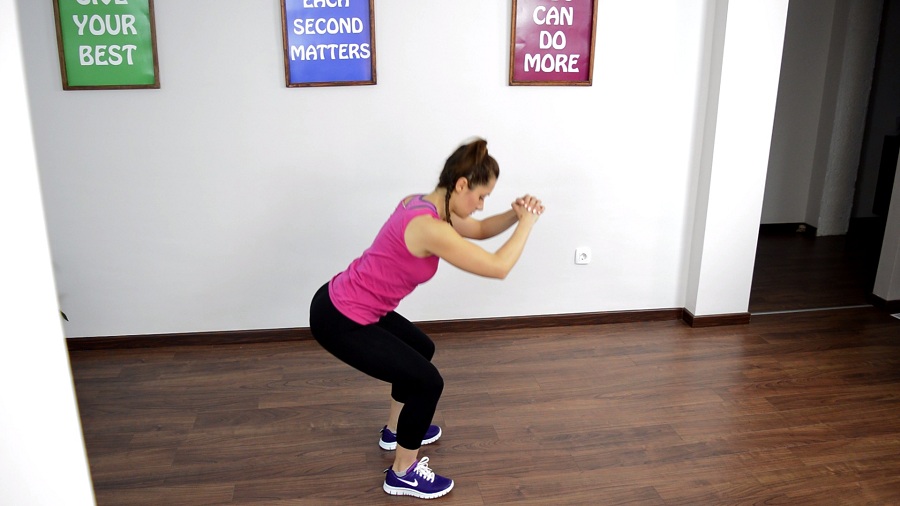
To do a basic squat properly, you have to stand in an upright position, with your feet hip-distance apart. Bend your knees, extend your buttocks and shift your weight to your heels. Remember that your knees should always be behind your toes.
Stand up, rinse and repeat.
The squat is a very simple movement that works wonders for strengthening and toning your legs, shaping your butt and burning calories.
Make sure to use different squat variations in order to burn extra calories while keeping your program engaging.
With squats, there is more variety to be had.
Before we compare squats versus lunges, we must consider their variations as well. So let’s spice things up by introducing some of the different types of squats:
Split squats
In a split squat, you work one leg at a time. To do the movement, take a step forward, with the back of your heal foot raised. To put it simple, you are actually squatting with your back leg, lowering the knee until it almost touches the ground, then pushing back.
Watch your front knee – it mustn’t go past your front foot as you go down. This movement activates the same muscles as the squat, but puts extra tension on your abs, which is an added bonus to your overall strength conditioning.
Single-leg squats
This is a more difficult variation if the split squat. Again, you are squatting with one leg, but you keep the other leg in the air, either extended in front of you (the extra difficult pistol squat) or with your knee banded back.
Once you achieve a good balance in this position, squat as low as you can, pause for a second, then push back. Again, watch the form – keep your knee behind the front toes. The single leg squat can trigger new muscle growth and will help with coordination and mobility.
Squats till failure
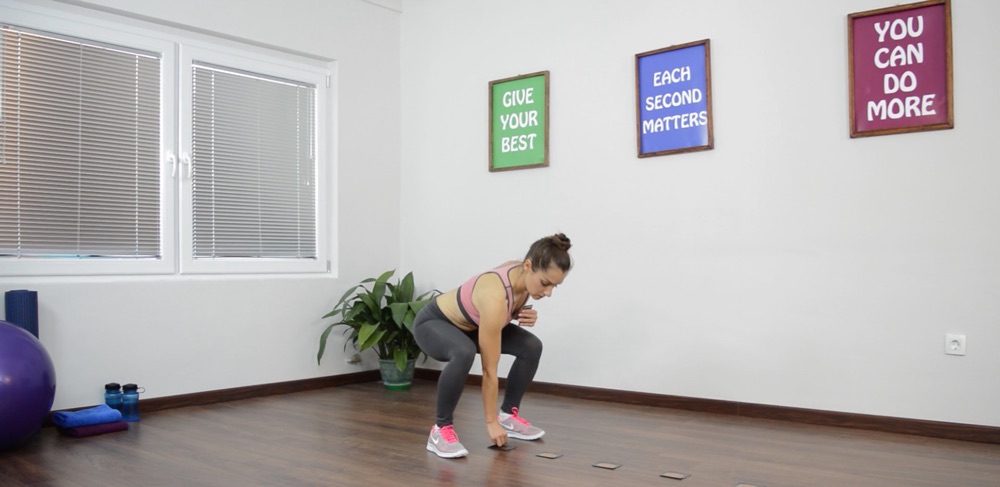
There is a squat workout routine invented by Mike Tyson many years ago, that involves a deck of cards and as many squats as you can possible perform.
We’ve included this beast of a workout in our own program, and people say that the results are phenomenal when it comes to strengthening and burning those quads.
Jumping squat
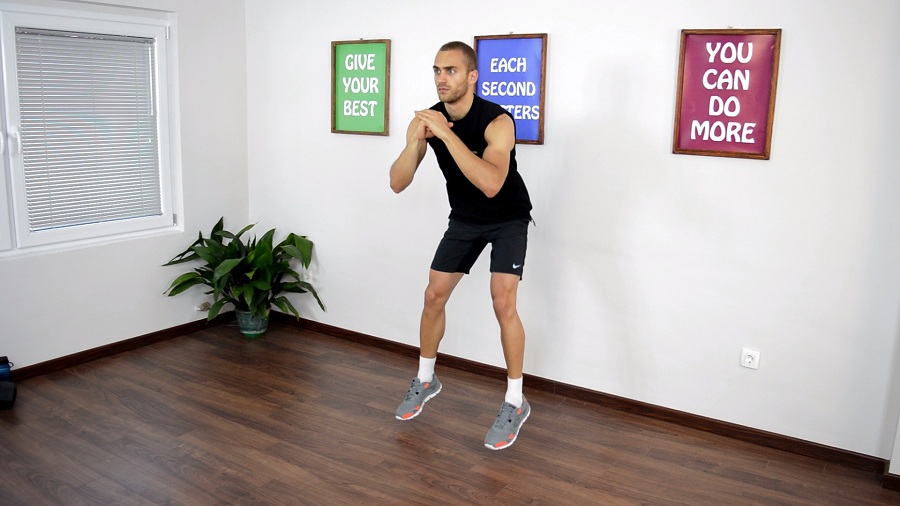
In a jumping squat, you lower your body in the position of a basic squat, but push back with an explosive movement in the air (you basically jump with a straight body and an engaged core as high as you can).
Then, you land with slightly bent knees back into the squat position. This is a great squat variation, because it does not only work you lower body, but also builds your explosive power and sends your heart rate through the roof. It’s a fine blend between cardio and strength training and it will help you burn belly fat, and strengthen your core.
Jumping squats can be nicely combined with power jumps. Both are excellent for your lower abs, and the entire abdominal section.
There are many other types of squats which you can choose from once you have mastered the basic squat. They all have some added value to working and sculpting the lower body muscles. If your fitness goal is to add some extra muscle on your legs or increase your strength pick up a weight and give your inner thighs and glutes that extra grilling (check out the weighted sumo squat or the goblet squat to feel the burn).
Our fitness program includes plenty of exercises where you will find dozens of squat varieties. If you want a tight lower body, and chiseled legs, make sure to check the link below.

Lunges
Every time you kneel down to tie your shoes, you are basically doing a lunge. The lunge is a single leg exercise that works your glutes, quads, hips, hamstrings, core and the inner-thigh muscles.
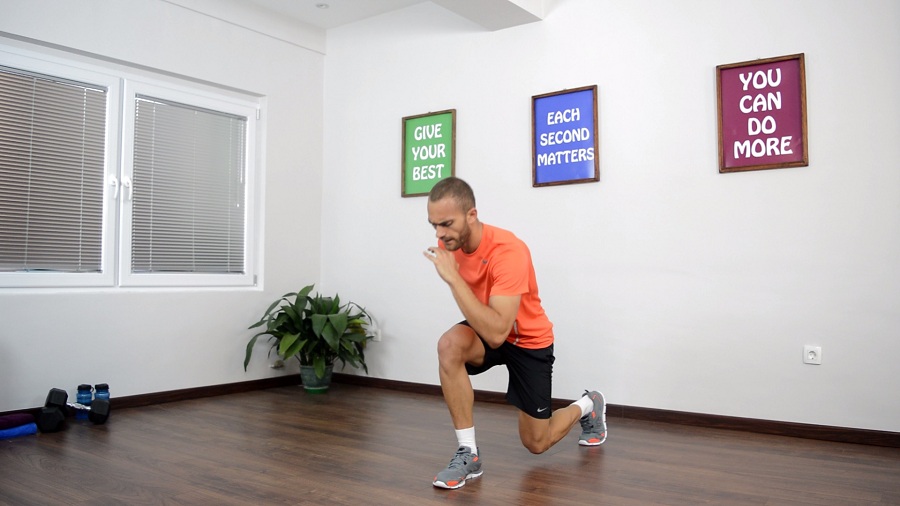
To do a lunge, put your body in the same position as for squatting – stand tall in an upright position, with your feet hip-distance apart. Then take a step forward with your right leg while shifting your weight forward so the heel is the first thing to touch the floor.
Lower your body so that the right thigh is parallel to the floor (and make sure that the knee doesn’t go past the toes). Go back by pressing into the right heel.
Change legs and repeat.
Just like the squat, the forward lunch is a very simple movement, although it requires a bit more balance than the squat as it involves one leg at a time.
Make sure to go faster in order to add a cardio twist to your lunge workout.
When it comes to variations, lunges are even more versatile than squats. Let’s have a look at some types of lunges you might like:
Lateral lunges
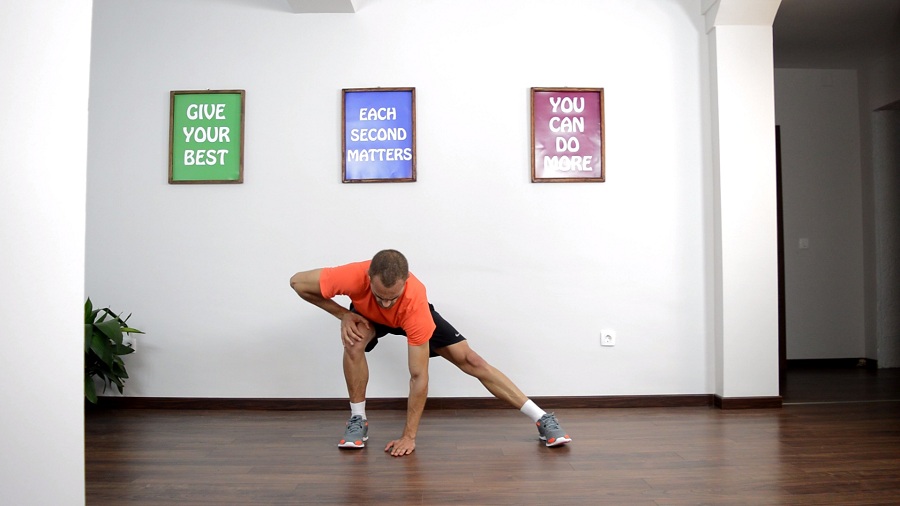
In a lateral lunge, you take a step to the side, pushing your hips back. You lower your body until both thighs are parallel to the floor, and then push through your heels to return to a starting position. This is an excellent variation to give your entire leg, specially inner and outer thighs and hips, their fair share of proper burn.
Reverse lunges
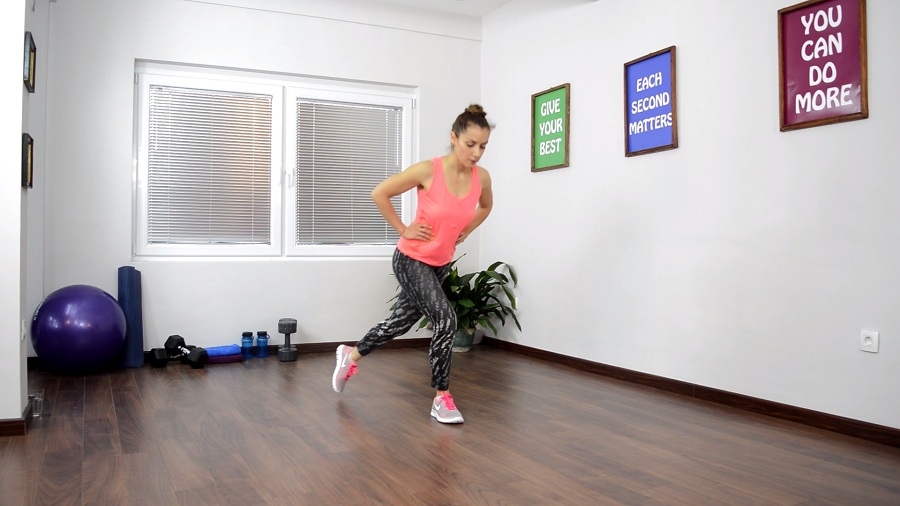
In a reverse lunge, as the name suggests, you reverse the basic lunge movement. So, instead of forward, you are taking a step backwards and then lowering your body in a lunge. To stand up, you push through the front leg glute. This variation puts more effort on the glutes and works the quads much harder.
Walking lunges
When doing walking lunges, you are actually making a forward-lunge but your alternate your legs in a continuous walking like-movement. This type of lunges is excellent for your stability and for working your core muscles. They also give your heart rate a nice boost.
Stationary lunges
The difference between the stationary, and the basic forward lunge, is that here you don’t push your body back to standing position. You simply strengthen your back leg by pushing through the glute, and then lower your body again.
They are a bit more difficult variation challenging your entire leg, sculpting your hips, quads and glutes. You can always pick up some weights to make them even more challenging.
Just like with squats, you can make every lunge variation a bit more difficult by adding weight. Once you are confident in your strength and balance, try the dumbbell lunges or weighted overhead lunges for an extra burn.
Now that I have explained squats and lunges, as well as some of their variations separately, let’s quickly go over the squats vs. lunges conundrum again and put what we have learnt into perspective.
Lunges vs Squats: Muscles worked and benefits
While both lunges and squats are compound movements, they use different muscles in a different way. In a nutshell, here is the main difference when comparing lunges vs. squats.
Squats, in general, are an excellent exercise to target different muscle groups in your lower body like buttocks, hips, thighs, quadriceps and hamstrings. Squatting also helps increase the flexibility of the ankles and hips, which is important for preventing injuries.
Lunges, on the other hand, work the glutes more, especially your hips and buttocks, as well as your hamstrings, quads and calves. Additionally, as they engage your abs and your back muscles to stabilize the movement, they also improve your core strength. Finally, lunges stretch the hip muscles and improve the flexibility of the hip joints.
Lunges vs. Split Squats
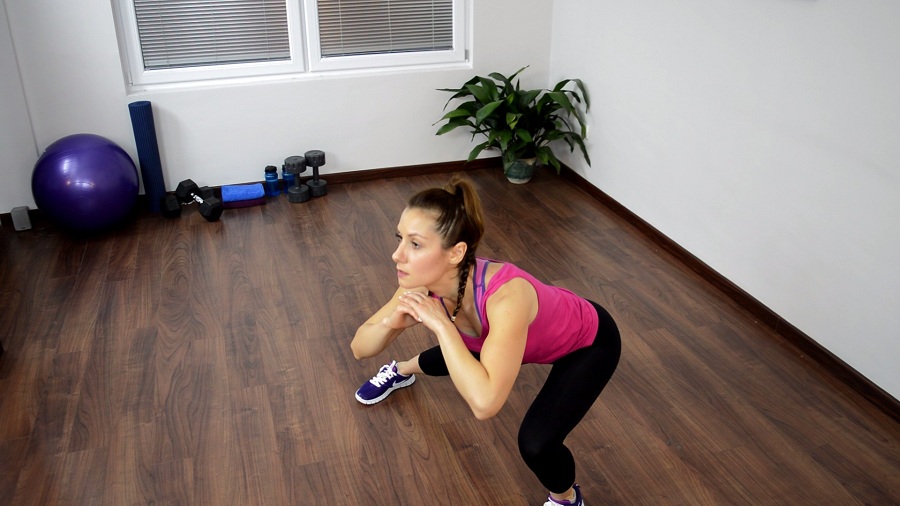
Lunges and split squats share certain similarities that make them easy to confuse. However, it is very important to understand the difference between them, both in terms of muscles engaged and the form considerations. So, what’s the deal?
In both exercises, you place one leg in front, and one leg behind. The key difference is that when lunging, you are engaging both the front and the rear leg with equal distribution of your weigh, while in the squat your rear leg rests throughout the exercise, meaning that all the weight is shifted on the front leg that does all the work.
Both exercises focus on your glutes and thighs, quads and hamstrings, including your calves and core. However, the lunge, due to the balanced load, is less intense and fatiguing to the muscles as compared to the split squat.
So, lunges vs. split squats, what’s the verdict?
If I have to choose, I will personally go with the lunge. It is a more compound movement, and there is more of a balance requirement when you are trying to complete a proper repetition.
But, regardless of what you chose, always have in mind that proper form is a key element to consider. When descending, keep your torso raised to avoid unnecessary strain in your back muscles. Always make sure that your knee is aligned with your second foot and that it never goes past your front foot, otherwise, you risk injuring your knee. Once you master these movements, and if you want extra results, start adding additional weight.
Squats vs. lunges – The verdict
It’s time for the closing remarks on Squats vs. Lunges. So bear with me.
Squats and lunges are two of the best exercises for strong and lean legs. Let your fitness goals determine which one you pick, although ideally, you should incorporate both in your leg workouts.
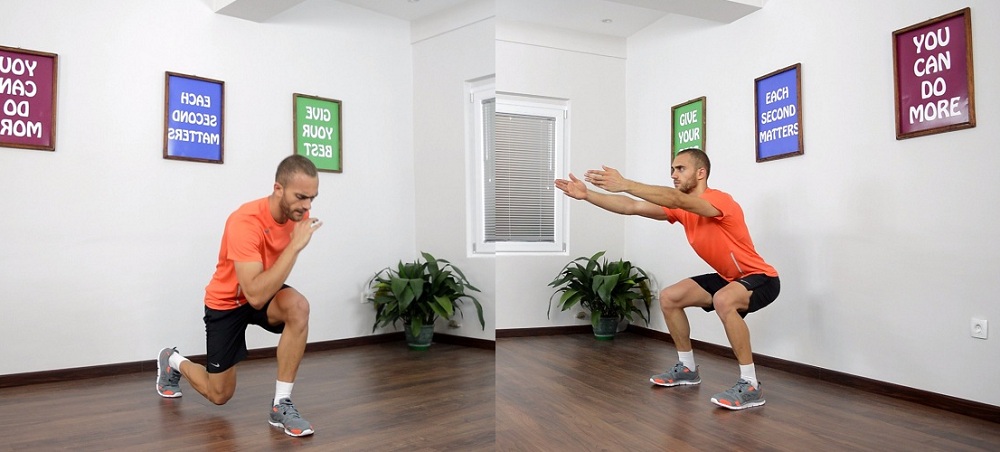
So, when it comes to the squats vs. lunges dilemma, let your level of fitness and your future goals be the best indicator. Squats have lower demands on your balance as having both feet on the ground gives you a more stable base. This, of course, is compared to lunges, where you work one side at a time.
If gaining strength and muscle is your goal, then squats and different squat variations may be more suitable for you. If, however, your emphasis is more on improved balance and generally stronger legs, you should opt for lunges. Eventually, the question is not which one is better. They both are, only in a different way.